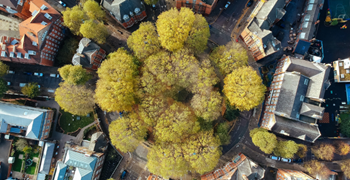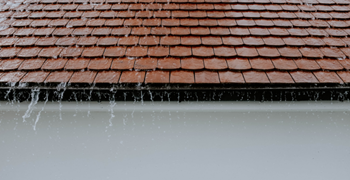30/08/2021
I Love My Thatched Property: Robin Barker
In the second of our interviews with thatched property owners, Robin Barker, a long-term John Albion client, tells us about his 16th-century thatched cottage and the reason it brings him pleasure every day.
Can you tell readers a little bit about your thatched cottage?
We’re in North Oxfordshire on the Cotswolds border. Lower Heyford is a very old village; we’ve got a bridge over the River Cherwell that was built in 1250.
The house we live in dates back to 1560. On the outside, we’re extremely old and on the inside, we’re decidedly modern. We’re situated right in the middle of the village of Lower Heyford and there are other thatched properties around us. Not all are thatched but most houses are built of old Cotswold stone. We’ve been here for about 23 years now.

How did you learn the age of your home?
A previous resident was a historian who lectured at Oxford University. He was very reliable and found a lot of background information, which he left with the house. Every owner subsequent to that passed the information on to the new owners, so we do have a good bit of history about the house.
It includes the various changes that have been made to the property. Of course, there have been a number of re-thatchings over the years. One of the downsides of a thatched property is that it could need re-thatching every 15-20 years. We were limited by the thatching materials, which meant we had to use wheat, although water reed typically has a longer life.
The cottage did suffer a fire in the past. Half the property was totally engulfed in fire. The thatch and the upper storey of the house were devastated and had to be replaced. That was about 40 years ago.
Did you have any reservations about buying a thatched cottage?
When we moved here, I was fairly green as far as the maintenance of thatched properties went. All I knew was that it looked lovely!
We did know that we could afford to spend quite a bit of money on doing up the interior. It hadn’t been modernised for 60-70 years, I would say. We needed to carefully consider how much it was going to cost to thoroughly modernise the interior and it did cost us about £100k. We finished up with a very old-looking property that is thoroughly modern inside. I think that’s what most people aspire to.
Do you have any tips for someone planning to buy a thatched cottage?
Yes. My tip would be to carefully examine the thatch and enquire when the property was last fully re-thatched. There’s no getting away from the fact that no thatch lasts for more than about 20 years without significant attention. I would recommend they examine the thatch and make sure they see or get evidence of when it was last done. That would give them some indication as to when it’s likely to need doing again in future and how much it’s going to cost.
That said, there is an interim stage. About 15 years or so after it’s been thoroughly re-thatched, it will need the ridges attended to. Ridges can be replaced at a modest cost. When it’s been re-ridged, recombed and probably rewired, you’ve got around another 10 years of life.
You should also look at the fabric of the building. Many thatched cottages are stone, so have a look at the quality of the stonework. You need to make sure that it isn’t going to crumble. You need to establish the quality of the stonework and its longevity.
Indeed, I’d recommend a full survey because the thatch isn’t the only thing to consider when buying a thatched cottage.
Do you have a wood-burner or open fire?
We’ve got two wood-burning stoves here. One in the drawing-room, which is a large room with a large wood-burning stove in it. We only light it on Christmas Day, so I don’t get too worried about that.
With the other, I had to have the chimney lining inspected for the insurer and the inspector recommended that we had it redone. To have it relined – and to have a certificate saying it’s in extremely good condition – is very comforting because heat transfer from a chimney into the thatch is a major cause of fires.
How have you found the process of arranging Thatched Cottage Insurance?
When you’ve done everything you’re required to do, it’s fine. We are asked for a complete electrical survey every five years and we do that because we’re required to do it for the insurance. We’re also required to have an inspection of the chimneys every five years or so and we’ve always done that. But it all adds to the expense.
I came to John Albion after spending about 15 years with another company. They put the premium up every year, even though we’d never made a claim.
In the end, I asked the chap opposite, who also lives in a thatched house, and he said he was insured with you. That’s how I came to you and your premium was less than half what I’d been asked to pay by my previous insurer. You do put yours up every year but it’s more or less in line with inflation and I’m happy with that.
What do you love the most about living in a thatched property?
Sitting in our garden. Every time I sit in the garden, it gives me pleasure to look at the house. Almost every day between spring and autumn I deeply enjoy looking at our 1560 cottage. The visual appearance of it gives me continuing pleasure.
I think it must be the same with most thatched property owners. You put up with the re-thatching and re-ridging and all the things that go with it so you can sit in your garden and look at your house and think ‘that really does look lovely!’. I’m sure it attracts birds to the garden too, you know!
Related Articles





